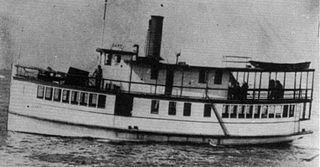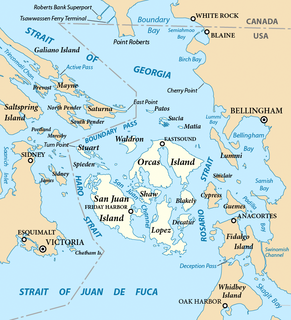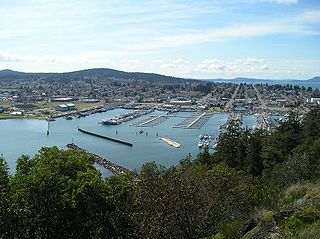
The steamboat Dart operated in the early 1900s as part of the Puget Sound Mosquito Fleet.

Hyak was a wooden-hulled steamship that operated on Puget Sound from 1909 to 1941. This vessel should not be confused with the sternwheeler Hyak which ran on the extreme upper reach of the Columbia River at about the same time. The name means "swift" or "fast" in the Chinook Jargon.

Henry Bailey was a sternwheel steamboat that operated on Puget Sound from 1888 to 1910. The vessel was named after Henry Bailey, a steamboat captain in the 1870s who lived in Ballard, Washington.
Elk was a steam tug that operated on Puget Sound, and earlier, from 1880 to 1896, on Lake Washington under the name of Katherine.

Lady of the Lake was a wooden steamboat that operated on Puget Sound from 1897 to 1903. Following a fire in 1903, the vessel was rebuilt as the tug Ruth.
Daisy was a sternwheel steamboat that ran on Puget Sound and the Skagit River from 1880 to 1897.

Quickstep was a steamboat that operated from 1877 to 1897 in coastal, inland waters and rivers of the Pacific Northwest. This vessel should not be confused with a number of other vessels with the same name, some of which operated in the same area about the same time.

Otter was a wooden sternwheel steamboat that was used in Puget Sound and briefly on the Columbia and Stikine rivers from 1874 to 1897.

Teaser was a steamboat which ran on the Columbia River and Puget Sound from 1874 to 1880.
Comet was a sternwheel steamboat that ran from 1871 to 1900 on Puget Sound and rivers flowing into it, including the White and Nooksack rivers.

Alice Gertrude was a wooden steamship which operated on the Strait of Juan de Fuca and Puget Sound from 1898 to January 1907, when she was wrecked at Clallam Bay in Washington.

Inland Flyer was a passenger steamboat that ran on Puget Sound from 1898 to 1916. From 1910 to 1916 this vessel was known as the Mohawk. The vessel is notable as the first steamer on Puget Sound to use oil fuel. Inland Flyer was one of the most famous vessels of the time on Puget Sound.

Kirkland was a sidewheel steamboat that ran on Lake Washington from 1888 to 1898.

Concordia was a steamboat that ran on Puget Sound from 1930 to 1976. Although later converted to diesel power, Concordia was the last inland commercial steamboat ever built on either Puget Sound or the Columbia river.

Atlanta was a steamboat built in 1908 at Houghton, Washington which served on Lake Washington and Puget Sound until 1938, when it was converted into a diesel-powered houseboat.

Suquamish, built in 1914, was the first diesel-engined passenger vessel in the United States. Much later Suquamish was converted to a commercial fishing vessel and was registered as a Canadian vessel under the name Terry.

Speeder was a motor launch built in 1908 which served on Puget Sound and in the San Juan Islands. From 1908 to 1922 this vessel was named Bainbridge.


















